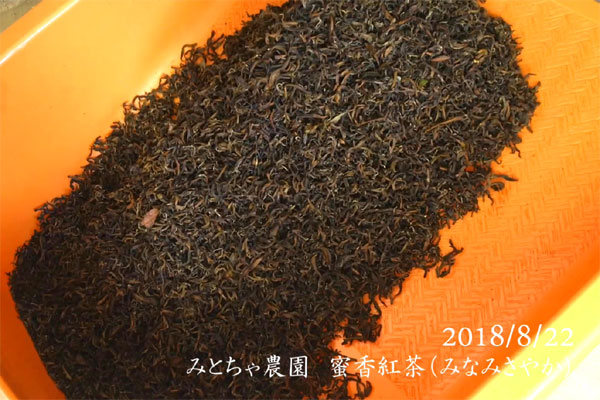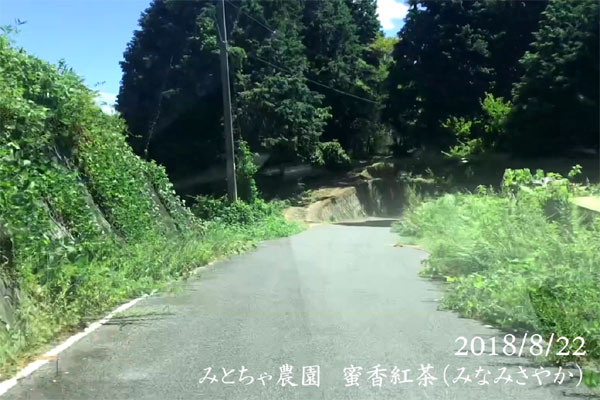One day in the latter half of August, I visited Yamazoe Village in Nara Prefecture.
The purpose of my visit was to make honey-scented black tea.
We are going to visit Mr. Kayashita, a young tea producer who produces pesticide-free and fertilizer-free tea.
Kayashita-san runs Mito-cha Farm (https://mitochanara.wordpress.com/), which produces kettle-fired tea, which is rare in the Kansai region. Last year, he came to Uji-Tawara for hand-firing tea, and we have been exchanging information about tea.
When I drank Mitocha Farm’s honey-scented black tea “Yamato Bijin” a while ago, I could not forget its delicious aroma, and I wanted to visit the farm to see how it is made. I wanted to visit the farm to see how they make their tea, which led me to this visit.
I’m really looking forward to it, since I don’t actually know how to make tea.
We arrived a little early to see the tea plantation, as the tea making process starts at noon.
Yamazoe Village has quite a few hills. Uji-Tawara has a lot of fields in the city, but Yamazoe Village is in the mountains.
(The image is a capture of the video taken)

The field was not treated with pesticides or even fertilizers, but the tea leaves and other plants were very clean and not necessarily eaten by insects. There are many conventional fields (controlled with pesticides and fertilizers) in Yamazoe Village, but compared to them, the growth of leaves after the first tea leaves is much less, so as a natural farming method, one of the keywords may be the amount of harvest and frequency of harvest.

Tea leaves are plucked the day before and allowed to sit for a day.
A nice aroma of wilted fragrance wafts around the area.

This is placed in a bag, rubbed with a rubbing twister, and the process is repeated several times to loosen the bag in the middle.
By doing so, the green leaves gradually turn brown.

It is then allowed to sit for an hour to ferment.
After rubbing with heat and further aroma has passed, the blue is killed by kettle frying.

When it is put out, it takes on the appearance of black tea at once.
After the drying process, the rough tea is completed.

We had some free time in the middle of the work, so we decided to compare the different varieties of honey-scented black tea.
I was surprised to find that each tea has its own unique characteristics, such as the way they are made, including the method of fermentation, the way they are left to stand, the way they are twisted, and the way they are fermented.
Some had a distinctive aroma, some had a moderate astringency, and some had a long aftertaste, and we spent a pleasant time saying, “This one is good, this one is good, this one is good.
Later, when I was picking vines at a tea garden in Uji-Tawara, I noticed that the tea garden where the leaves were harvested by scissors had a full crop of unicorn flies, while the tea garden where the leaves were hand-picked did not.
Because of its strong aroma, it requires a special rubbing machine, but it may be possible to make it if you are so inclined.
I would like to make it myself someday.
This time, seeing the making of honey-scented black tea, which is different from the gyokuro we usually make, gave me another chance to enjoy tea. Thank you, Ms. Kayashita of Mitocha Farm!
*This honey-scented black tea, Yamato Bijin, can be purchased on Mitocha Farm’s website; it is out of stock as of August 2018, but will be available in the fall for this year. Please contact Mitocha Farm for more information.
